Tháng 10 14, 2021
Bạn muốn cách viết IELTS Writing Task 2 để đạt điểm cao? Hay IELTS Writing Task 2 có các dạng đề nào? Bài viết sau đây của ISE sẽ bật mí những TIPS tự học kỹ năng viết IELTS giúp bạn ăn trọn điểm cho phần thi này. Cùng tham khảo ngay nhé!
>>>> Xem Thêm: Luyen thi IELTS cap toc tăng từ 1.0 – 1.5 điểm ngay sau 2 tháng
Trước hết, các bạn cần nắm được những thông tin cơ bản nhất về phần thi IELTS Writing task 2.
Bài luận trong Task 2 IELTS sẽ có 4 phần cơ bản, đó là:
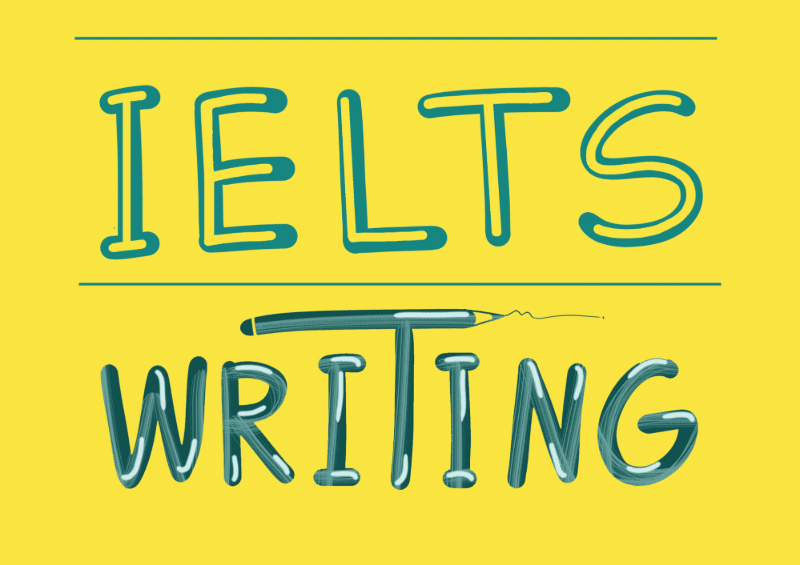
Cấu trúc trên nhìn có vẻ đơn giản nhưng bạn cần luyện tập rất nhiều để có thể viết linh hoạt các topic khác nhau. Mỗi phần cần có một ý riêng, giải thích và đem ví dụ chi tiết để trình bày quan điểm phù hợp nhất. Đặc biệt, bạn cần chú ý dùng những từ nối hay các loại từ liên kết khác để các phần trên liền mạch nhau.
>>>> THAM KHẢO THÊM: Huong dan cac luyen IELTS cap toc phan Writing
Bài IELTS Writing task 2 có yêu cầu gì không? Câu trả lời tất nhiên là có. Bạn cần thỏa mãn đủ những yêu cầu dưới đây để đạt điểm cao:

Vậy tiêu chí chấm điểm của phần thi này là gí? Người chấm bài sẽ dựa vào 4 yếu tố sau đây để đánh giá bài làm của bạn:

Bạn cần trả lời đủ các yêu cầu, đưa ra ý kiến sau đó giải thích và đưa ra ví dụ chứng minh ý kiến đó. Sự chính xác và logic sẽ giúp bài viết của bạn được người chấm bài đánh giá cao đấy!
Những bài điểm cao đều có điểm chung đó là sự logic và mạch lạc, liên kết ý tốt. Khi viết bài, bạn phải có đủ mở bài và kết bài, phân chia đoạn hợp lý. Mỗi đoạn chỉ nên nêu một ý để tránh kéo dài lan man. Bên cạnh đó, trong Task 2, bạn cần dùng nhiều từ đồng nghĩa để bài viết đa dạng và không bị lặp.
Nếu bạn sử dụng từ vựng phong phú, đặc biệt là dùng nhiều từ đồng nghĩa thì chắc chắn bài làm của bạn sẽ đạt điểm cao đấy!
Trước khi viết hay, bạn cần viết đúng ngữ pháp trước. Bên cạnh đó, người chấm bài sẽ đánh giá cao những bài sử dụng đa dạng câu đơn, câu ghép và các cấu trúc ngữ pháp khác.
Nếu bạn muốn đạt điểm cao thì hãy rèn luyện 4 tiêu chí trên thường xuyên nhé!
>>>> ĐỪNG NÊN BỎ QUA: Trung tâm luyện thi IELTS cấp tốc HCM cho người mới
Đề bài của phần thi IELTS Writing Task 2 thường xoay quanh các chủ đề thường ngày, những đề bài mang tính chuyên sâu sẽ không xuất hiện trong Task 2. Các chủ đề thường gặp là: Sức khỏe (health), du lịch (travel), các vấn đề xã hội (current affairs), giải trí (recreation)…
Hãy luôn ghi nhớ những điều sau đây để bài viết của mình không bị mắc lỗi nhé:

Lưu ý khi làm bài
Chú ý
Sau đây là các dạng đề IELTS writing task 2 ISE đã tổng hợp cho bạn:
>>>> XEM CHI TIẾT: 6 trang web sửa Writing IELTS miễn phí chất lượng nhất
Để hoàn thành tốt bài thi IELTS writing task 2, thí sinh cần thực hiện lần lượt các bước sau (bao gồm ví dụ mẫu):
Đọc kỹ yêu cầu đề bài để phân tích các yếu tố sau trong đề:

Example:
Đề bài: Some people say that the best way to improve public health is by increasing the number of sport facilities. Others, however, say that this would have little effect on public health and that other measures are required. Discuss both these views and give your own opinion.
Đây là bước quan trọng quyết định bài viết của bạn có đầy đủ ý hay chưa. Vì vậy, bạn khoan vội viết bài ngay mà hãy lập dàn ý hoàn chỉnh. Cách viết IELTS Writing Task 2 này giúp bạn tiết kiệm thời gian và giảm thiểu đáng kể số lỗi sai. Từ đó bạn có thể chú ý vào từ vựng và cấu trúc câu cho bài luận của mình.
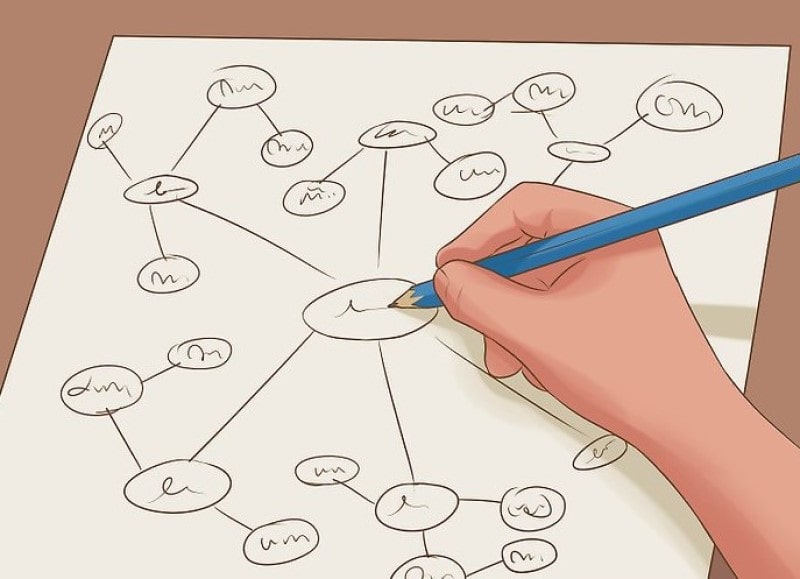
Cụ thể: Các bạn nên dành 5-10 phút lập dàn ý cho bài viết của mình. Cách này sẽ giúp các bạn tiết kiệm thời gian làm bài thi và khiến bạn mắc ít lỗi sai hơn khi làm bài bởi bạn đã có đầy đủ ý của bài viết ngay từ đầu, và bạn có thể tập trung hơn vào từ vựng cũng như cấu trúc ngữ pháp.
Hai yếu tố chứa đựng trong phần mở bài: Background Sentence và Thesis Statement:
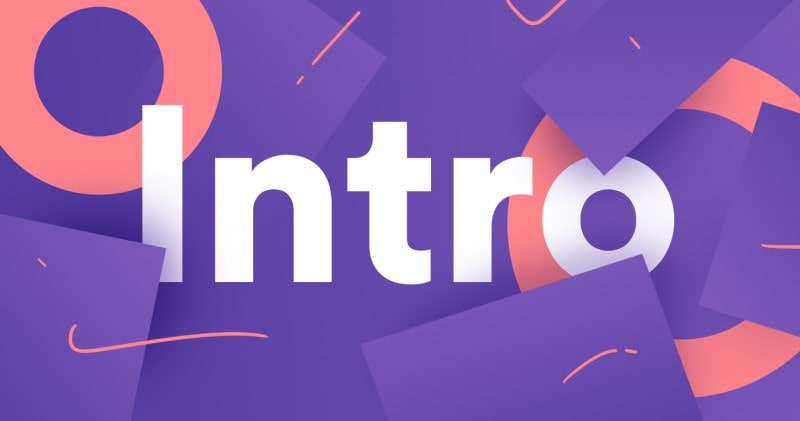
Example:
In some countries, many more people are choosing to live alone nowadays than in the past. Do you think this is a positive or negative development?
➥ In recent years, it has become far more normal for people to live alone, particularly in large cities in the developed world.
The older generation tend to have traditional ideas about how people should live, think and behave. However, some people believe that these ideas are not helpful in preparing younger generations for modern life. To what extent do you agree or disagree with this view?
➥ While I agree that some traditional ideas are outdated, I believe that others are still useful and should not be forgotten.
Thân bài gồm 2 đoạn văn và mỗi đoạn cần bao gồm những ý sau:
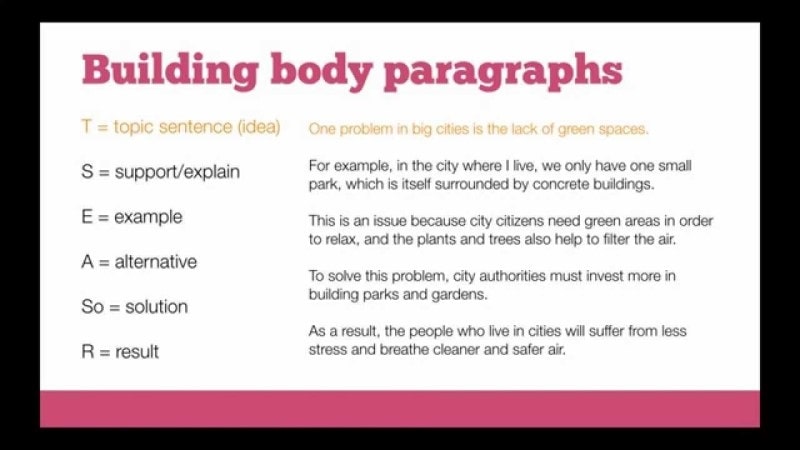
Example:
Some people think that employers should not care about the way their employees dress, because what matters is the quality of their work. To what extent do you agree or disagree?
Đoạn 1:
On the one hand, many employers have stopped telling their staff how to dress, and I see this as a positive trend (Câu chủ đề). Some of the most successful companies in the world, including technology giants like Google and Facebook, are famous for the relaxed office environments that they try to create. Employees are encouraged to dress casually, and even the company executives and leaders are rarely seen wearing anything other than T-shirts and jeans (Câu giải thích). However, while managers and programmers are free to dress how they like, they are expected to produce work of outstanding quality (Ví dụ). It is clear from the performance and global dominance of such companies that strict dress codes are completely unnecessary in the technology sector (Câu tổng kết ý).
Đoạn 2:
However, I would also argue that rules regarding employees’ clothing are still relevant in other work situations (Câu chủ đề). We expect certain professionals, such as nurses, police officers and airline pilots, to wear uniforms (Ví dụ). These uniforms may have a practical or safety function, but perhaps more importantly they identify the person’s position or role in society (Câu giải thích). Similarly, a lawyer, politician or school principal may choose to wear formal clothing in order to portray an image of authority, trustworthiness and diligence (Ví dụ). I believe that most of us prefer to see these professionals in smart, formal attire, even if it is not strictly necessary (Câu tổng kết ý).
Kết bài là bước cuối cùng nhắc lại câu trả lời cho câu hỏi của đề. Phần này bạn không nên đưa ra những thông tin mà đề không yêu cầu. Một số cụm từ thường xuất hiện trong phần kết bài như: In conclusion/In conclusion/To sum up/To summarize/All in all/In short/In a nutshell/…

Example:
Với đề bài trên, bạn có thể kết luận như sau:
In conclusion, I support the trend towards relaxed dress codes for workers, but I do not see it as applicable to all occupations or sectors of the economy.
Qua các dạng đề mà ISE đã đề cập tại mục 3, sau đây là chi tiết cách viết của từng dạng. Tham khảo ngay nhé!
– What is your opinion?
– Do you agree or disagree?
– To what extent do you agree or disagree?
>>>Phần mở bài: Viết lại câu nhận định trong đề bằng cách khác sao cho cùng nghĩa. Sau đó, bạn nêu ra quan điểm cá nhân (đồng ý/ không đồng ý/ trung lập).
>>>Phần thân bài: Bao gồm 2 đoạn. Đoạn 1 nêu ra lý do vì sao đồng ý/ không đồng ý/ trung lập. Đoạn 2 đưa ra các lý lẽ, ví dụ để chứng minh quan điểm mà bạn đưa ra trong đoạn 1. Với cách làm bài Writing IELTS task 2 này bạn thể hiện được tư duy phản biện khiến bài viết có giá trị hơn. Các luận điểm trong thân bài phải rõ ràng đồng thời phương pháp đưa ra luận điểm cũng phải hợp lý, mạch lạc và gắn kết chặt chẽ.
>>>Phần kết bài: Thí sinh phải khẳng định lại các quan điểm đã nêu trong phần thân bài. Đồng thời tóm tắt ngắn gọn lại ý chính đã trình bày. Với cách kết bài này sẽ giúp người đọc thấy được sự hoàn chỉnh của bài viết và giúp bài luận của bạn thống nhất ý kiến với 2 phần trên.
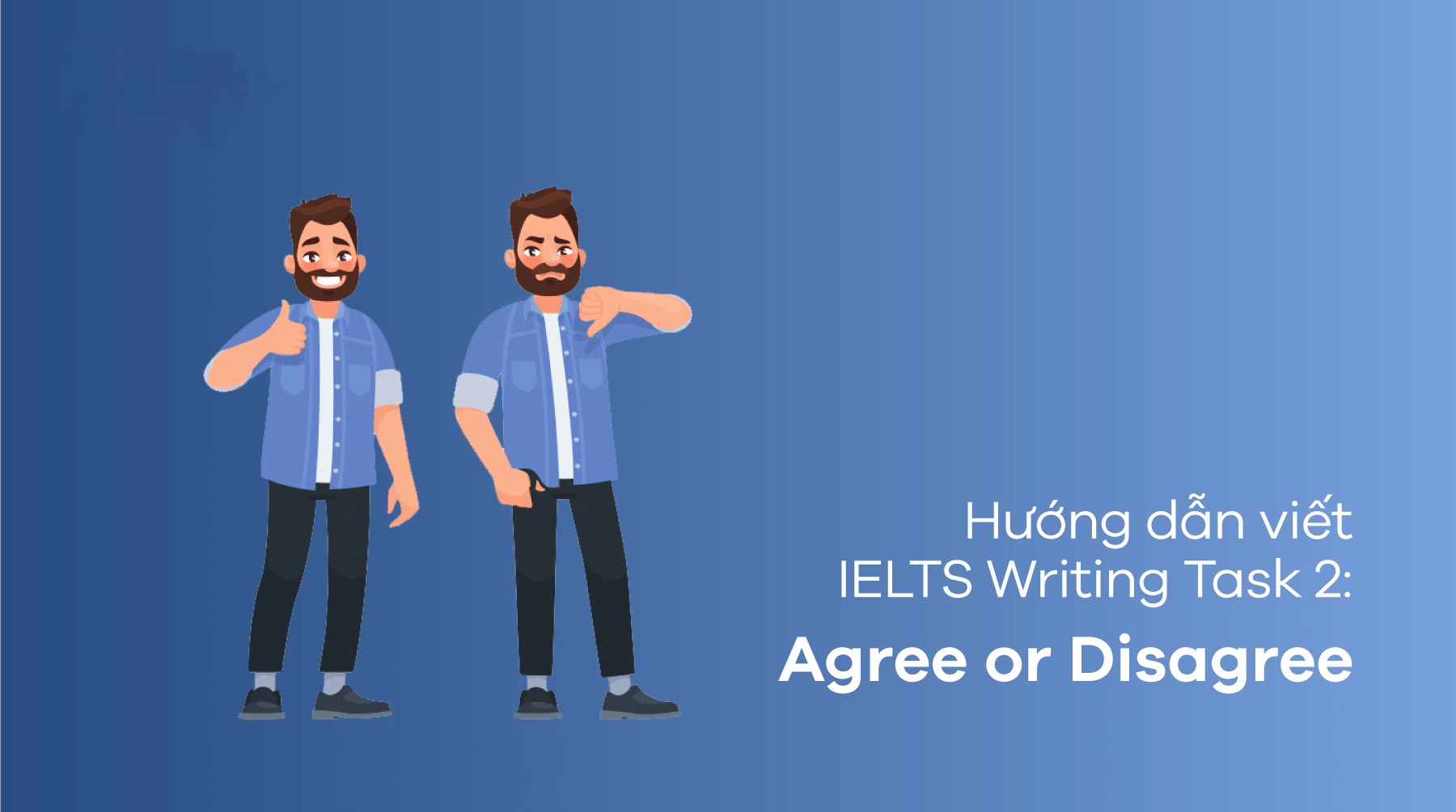
Example: The number of people suffering from health problems because of excess consumption of junk food is increasing in some countries. Therefore, it has become imperative for governments to impose a higher tax on this kind of food.
To what extent do you agree or disagree?
Với đề bài trên, ý kiến được đưa ra để bàn luận là: Số người gặp vấn đề về sức khỏe vì tiêu thụ quá nhiều đồ ăn vặt đang gia tăng ở một số quốc gia. Do đó, việc các chính phủ áp thuế cao hơn đối với loại thực phẩm này đã trở nên rất cấp thiết.
Bạn đồng ý hay không đồng ý ở mức độ nào?
Để giải quyết đề bài này, bạn có thể trả lời theo 3 cách:
– Discuss both points of view and give your opinion.
– Discuss both views and give your opinion.
>>>Mở bài: Bạn cần nêu tóm tắt trong 2 câu rõ ràng, hợp lý. Trong đó, câu 1 dùng để giới thiệu chủ đề bài viết và câu 2 nhắc đến hai mặt của vấn đề kết hợp nêu ra ý kiến cá nhân.
>>>Thân bài: Có 2 đoạn.
Đoạn 1 nói về mặt bạn không đồng ý trước. Lý do đưa ra ý kiến không đồng ý trước để bài viết khách quan hơn. Nếu đưa ra ý đồng ý trước thì dễ tập trung quá nhiều vào phần này, những phần sau sẽ sơ sài, mất cân bằng bố cục cũng như thể hiện tính chủ quan trong bài viết.
Đoạn 2 nói về mặt mà bạn đồng ý. Mở đầu nên dùng các từ nối như On the other hand, In contrast, Although/Despite/In spite of,… để nêu lên rằng dù ý kiến đầu đúng nhưng ý kiến thứ 2 vẫn đúng đắn hơn. Sau đó triển khai những điểm mạnh của mặt này, có thể so sánh trực tiếp với ý kiến không đồng ý ở trên.
>>>Kết bài: Tổng hợp các ý đã trình bày và khẳng định lại bản thân ủng hộ với quan điểm nào.
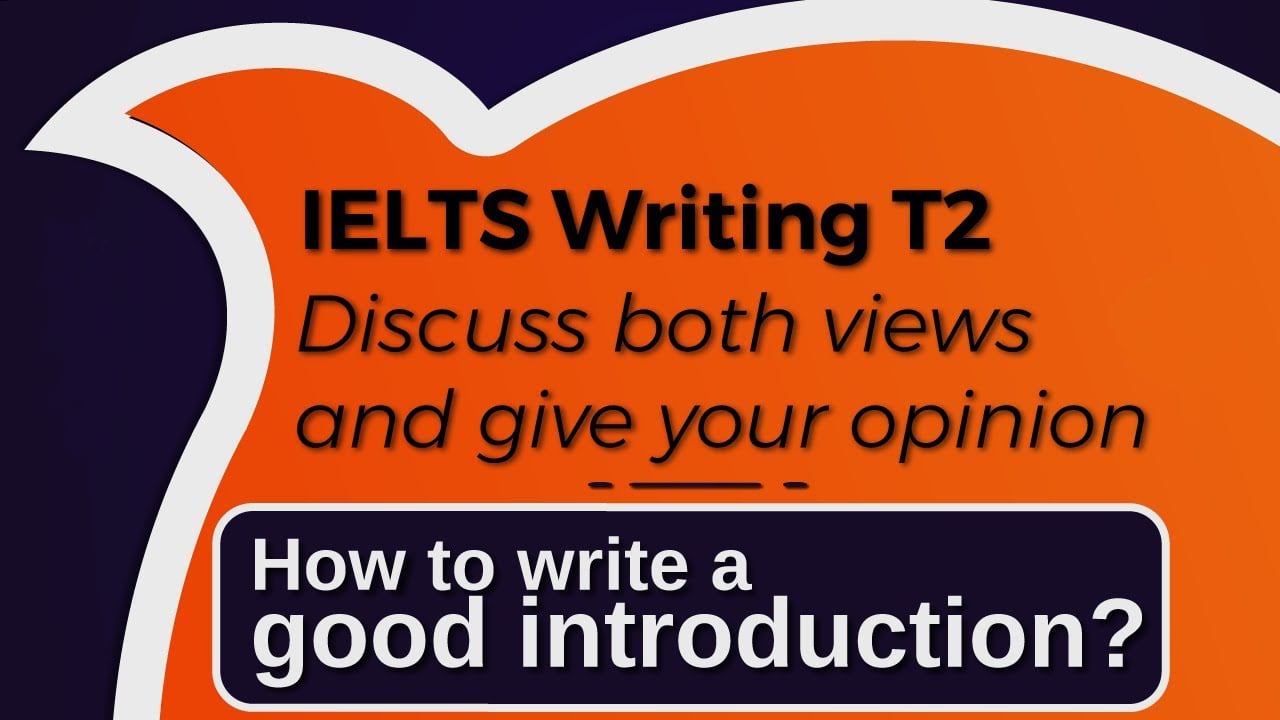
Example: Some people believe that children should be encouraged to have a sense of competition. On the other hand, others consider cooperation more important to make them good adults. Discuss both these views and give your opinion.
Đề bài trên có 2 quan điểm chính: “Some people believe that children should be encouraged to have a sense of competition” và “others consider cooperation more important to make them good adults”. Trong bài làm, bạn cần giải thích tại sao có sự trái ngược này và nêu ra quan điểm mà bạn cho là đúng.
– Discuss the advantages and disadvantages.
– Discuss the advantages and disadvantages and give your own opinion.
– What are the advantages and disadvantages…?
Loại 1: Chỉ liệt kê ra các ưu điểm và nhược điểm
>>>Phần mở bài: Đầu tiên bạn cần Paraphrase lại đề bài. Tiếp đến là Thesis Statement: Trả lời câu hỏi của đề bài – định hướng / giải pháp này mang đến cả lợi ích và bất lợi.
>>>Phần thân bài: Bao gồm 2 đoạn:
– Đoạn 1: Câu chủ đề: Một mặt, rõ ràng là …. sẽ tạo ra một số lợi thế.
– Đoạn 2: Câu chủ đề: Mặt khác, có một số nhược điểm rõ ràng sẽ phát sinh.
>>>Phần kết bài: Trình bày luận điểm mà bạn đã nêu và nói tóm tắt, tổng hợp các ưu điểm & nhược điểm.

Loại 2: Người viết cần chỉ ra liệu ưu điểm có lấn át được nhược điểm hay không
>>>Phần mở bài: Tương tự mở bài ở loại 1. Tuy nhiên, phần Thesis Statement phải nêu rõ quan điểm cá nhân là lợi thế quan trọng hơn hoặc bất lợi quan trọng hơn.
>>>Phần thân bài: 2 phần
– Đoạn 1: Viết về khía cạnh mà mình cho là ít quan trọng hơn
Một mặt,… .. mang lại cho mọi người một số lợi ích.
– Đoạn 2: Viết về góc cạnh mà mình cho là quan trọng hơn và có sử dụng ngôn ngữ cá nhân để xác định điểm của mình là cái này ‘nặng ký’ hơn.
“Mặt khác, tôi cho rằng những lợi thế của xu hướng / sự phát triển này sẽ được chứng minh là quan trọng hơn.”
>>>Phần kết bài: Viết 1 câu nói là vấn đề có cả 2 mặt lợi thế và bất lợi, nhưng theo quan điểm của bạn thì lợi thế/ bất lợi quan trọng hơn.
– Problem and solution.
– Cause and solution.
Example: The internet has changed the way people share and consume information, but it has also generated challenges that did not exist previously. What are the most important issues relating to the Internet, and what solutions can you offer?

– Đầu tiên, bạn nên vạch trước 2-3 nguyên nhân (causes) và 2 – 3 ảnh hưởng (effects) có thể có của vấn đề đưa ra
– Tìm Cause như thế nào: Thường những vấn đề xã hội được nêu trong IELTS Writing Task 2 dạng Causes/ Effects/ Solutions đều bắt nguồn từ những hoạt động trong đời sống thường ngày, thói quen và phong tục tập quán của con người.
– Tìm Effect như thế nào: Mọi vấn đề, tác nhân trong câu hỏi của đề thi viết IELTS Task 2 đều sẽ đem lại tác động tiêu cực/ tích cực đến 3 đối tượng là Individuals (Cá nhân), Society (Xã hội) hoặc Government (Chính phủ). Tương ứng, mỗi đối tượng sẽ bị ảnh hưởng ở những khía cạnh khác nhau.
– Tìm Solution như thế nào: Mỗi vấn đề sẽ có những giải pháp khác nhau ở những quy mô khác nhau. Bạn không nhất thiết phải đề cập hết tất cả giải pháp từ tất cả các đối tượng, chỉ chọn cần những giải pháp nào quan trọng nhất thôi.
Một câu dẫn đề và 2 câu hỏi theo sau
Example: Most people’s lives revolve around money. Despite the fact that some individuals believe it is more significant than others. What, in your opinion, are the proper uses of money? What more elements are necessary for a happy life?
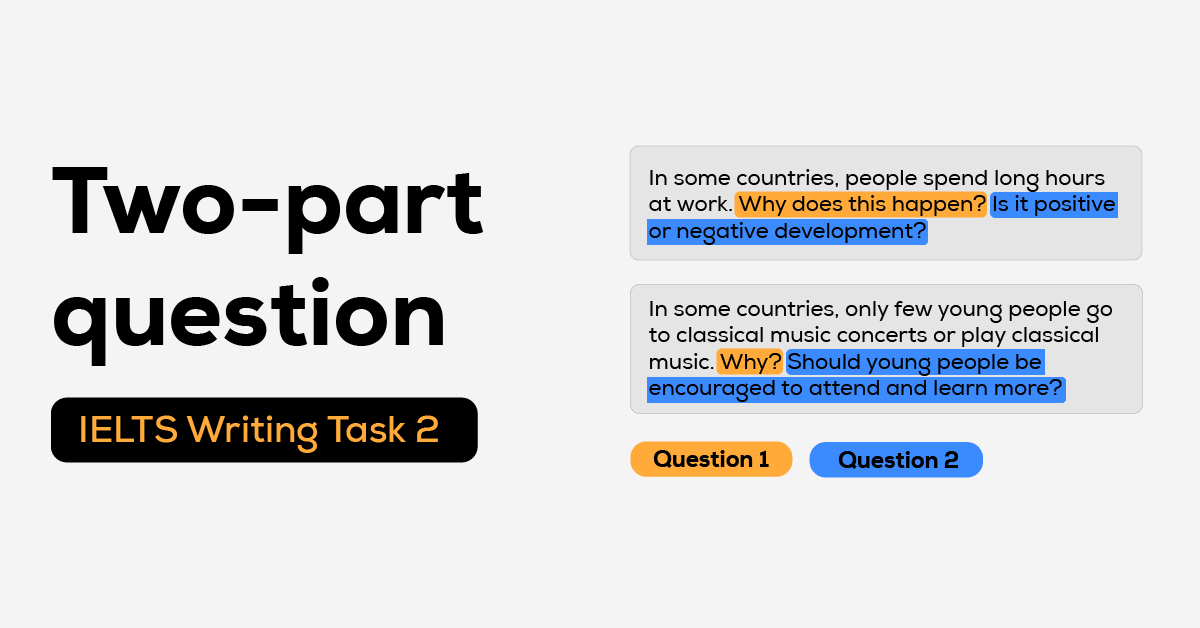
– Trước khi triển khai bài viết, bạn nên phân tích kỹ đề bài để có thể hiểu rõ và chính xác ngụ ý (nếu có) rồi mới viết phần trả lời cho hai câu hỏi ở đề bài.
– Trong phần các câu hỏi thì Câu hỏi thứ nhất thường hỏi lý do tại sao tình huống đó lại xảy ra, Câu hỏi thứ 2 thường hỏi sự ảnh hưởng do tình huống đó gây ra. Ngoài ra cũng có những câu hỏi tổng hợp khác, bạn nên gạch chân dưới những từ khóa, ghi nhớ chính xác nội dung câu hỏi.
– Bạn chỉ nên viết ngắn gọn những từ thể hiện quan điểm cá nhân như “I Think” hay “my opinion” ở phần Mở bài hoặc Kết bài tuyệt đối không đưa ý kiến cá nhân vào phần Thân bài mà phải viết theo tính phổ biến và khách quan.
Bên cạnh việc chia sẻ cách viết IELTS writing task 2, ISE còn bật mí cho bạn “hàng loạt” từ, cụm từ nối hữu ích để bạn có thể áp dụng trong bài viết của mình nhé!
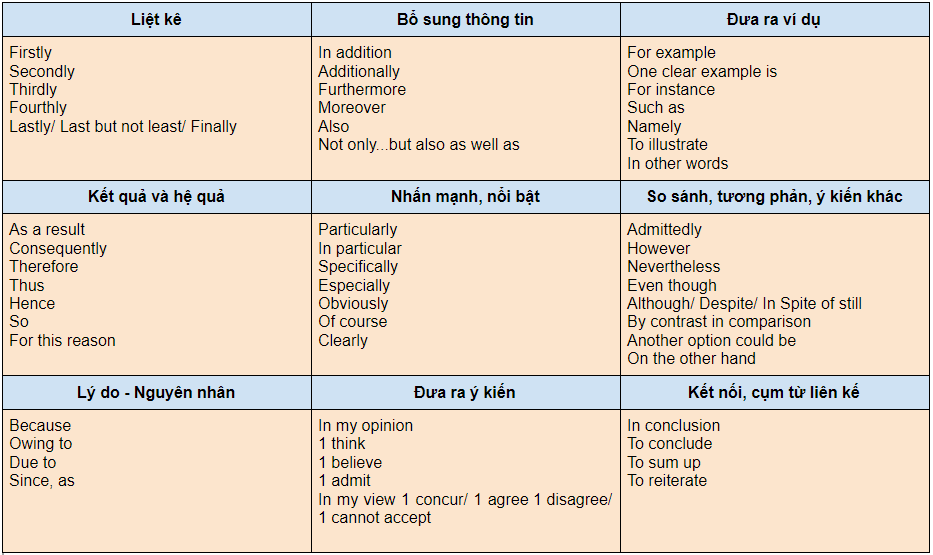
I Study English đã tổng hợp những bài mẫu đạt điểm cao của các chủ đề hot nhất trong task 2. Bạn hãy tham khảo cách làm và tự mình luyện tập thử nhé!

The trend of purchasing items with a well-known label is a major topic of concern in today’s society. This happens because people often associate a famous brand with quality, and sometimes because most of their peers are using the same products. As far as this is concerned, the positive aspects are more significant than the negative ones.
Popular brand names often attract a great number of customers. This is primarily because products with major brands are often of great quality and reliability. In today’s world, negative feedback can be spread so fast that these brands have to try their best not incur any criticism which can ruin their reputation. In addition to this, some people purchase items with a well-known name because they want to be a member of the society of people using that product. Apple, for example, has successfully built a community of hundreds of millions of users of the iOS operating system. The consequence of this is that new smartphone users are likely to choose an Apple one so that they have access to the aforementioned community, which means they can communicate and interact with other Apple product users effectively.
Overall, this trend brings more benefits than drawbacks to society. The only disadvantage that is worth mentioning is that companies that own famous brands may become monopolistic, which may be disadvantageous for consumers in the long term because these companies may lose the motivation to improve themselves. Laws and governmental policies, however, are now readily available to prevent any company from reaching the state of monopoly, so this disadvantage may be out of the question. This trend is of greater benefit, in a sense that buyers of a product with a well-known name are assured of product quality. These people, as a result, are less likely to worry about the chance of buying a low-quality item. When they buy more products with popular brand names, they may eventually attain the state of having all of their possessions up to a modern perception of what is a good product.
In conclusion, the two most prominent reasons as to why people purchase products from famous companies are product quality assurance and the desire to be a part of a community owning and using the same range of items. This development is positive to society at large, despite the only drawback being the chance it may turn a company into a monopolistic one. I predict that this trend will continue into the future, and consumers may thrive in a society where the quality of every single product is standardized, which is guaranteed by its brand name.

An aging population is a major topic of concern in many nations. Although there are some negative aspects of the majority of citizens having a longer life, there are compelling reasons as to why this is overall a desirable trend.
The expected increase in life expectancy may be conducive to several social consequences. The first problem that derives from a greying population is that governmental spending on elderly benefits is likely to rise, which places a financial burden onto the state budget. If this happens in countries with limited financial resources such as Vietnam, the government may have to raise the tax to compensate this spending, which transfers the aforementioned burden onto taxpayers. The economy, in addition to this, will suffer from a shortage of human resources as soon as senior employees retire from their jobs and there are not enough young workers to replace them. In other words, the anticipated rise in the proportion of elder citizens is likely to threaten the operations of thousands of companies.
The benefits of such a development, however, are of greater significance. A major advantage is that in the future if the percentage of senior citizens grows, that of children and teenagers often drops, which means education may not cost as much money as it does today. Another merit is that once the elderly represent a large part of the population, longevity will enable them to contribute more to society. In contrast to the past when many great inventors, scientists and mathematical geniuses such as Blaise Pascal lived a relatively short life, their counterparts today may stay healthy and work until they are in their seventies, eighties and sometimes even nineties. The great theoretical physicist Stephen Hawking, for example, published his last paper in 2018 when he was 76, a few months before he died of ALS.
In conclusion, the projected growth of the elderly population is likely to cause social issues, such as the scarcity of labour. There are, nevertheless, more significant advantages to this, including the chance for more old citizens to contribute more to the world. It is predicted that this trend, together with its profits, will be prevalent in most countries in the world in the next three or four decades.

It has been argued that people today should care for their own personal health purely to enjoy the personal benefits that are gained from having good health, rather than as a duty to others in their society. Personally I believe that people should take good care of their health not only to reap the associated benefits, but also as a way of helping to uplift the lives of the citizens within their own cities and countries.
Many people claim that the secret to a happy life is through achieving and maintaining good health, and I also stand by this notion. When someone experiences good physical and mental health they are able to enjoy their life to the fullest. Good health allows people to pursue their hopes and dreams and enjoy human relationships with family and friends. Without good mental and physical health, these ideals are difficult to attain.
In addition to this, today, people are suffering from mental and physical sickness and diseases more so than ever before. This, in turn, causes a heavy load on a country’s healthcare industry and causes large financial burdens to the country’s national budget, which comes at the cost of the tax paying citizens. If people were to look after their health better, it would reduce such financial burdens and the money could then be spent on other services that would benefit the quality of life for the society as a whole.
In conclusion, I firmly believe that all people should strive to achieve and maintain the highest levels of health possible not only so that they can be happy and enjoy their own life, but also so that they can contribute towards a more happy and healthy society around them.
>>>> Tham Khảo Ngay: Trang web sửa Writing IELTS miễn phí

Nếu bạn muốn bài làm đạt điểm cao, hãy nhớ 12 tips sau đây:
Trên đây là những bí kíp về cách viết IELTS Writing task 2 mà chúng tôi muốn gửi đến những bạn gặp khó khăn trong task 2. ISE mong rằng bạn sẽ cải thiện được khả năng viết và điểm số sau khi đọc bài viết này. Nếu còn bất cứ vấn đề gì? hãy liên hệ ngay cho chúng tôi qua website: ise.edu.vn để được giải đáp kỹ hơn nhé!
>>>> Xem Thêm:
Tháng 6 21, 2025
Bài viết này giới thiệu 10 phrasal verb phổ biến liên quan đến chủ đề sức khỏe. Những cụm từ này không chỉ giúp bạn mở rộng vốn từ vựng mà còn rất hữu ích khi áp dụng trong bài thi nói IELTS Speaking. I. 10 Phrasal verb chủ đề sức khỏe Burn out – […]
Tháng 6 21, 2025
Chủ đề IELTS Speaking Part 2,3: Describe an object that you think is beautiful đóng vai trò quan trọng trong bài thi IELTS. Vì thế hãy cùng ISE tìm hiểu các từ vựng thông dụng nhất, cùng với bài mẫu về chủ đề này nhé! 1. Bài mẫu IELTS Speaking Part 2: Describe an object […]
Tháng 6 16, 2025
Bài viết này sẽ đề cập tới idiom “Every cloud has a silver lining” với nghĩa việc gì đó không thể xảy ra hay khó có thể mà làm điều gì đó. Để tìm hiểu rõ hơn về ý nghĩa cũng như cách dùng của idiom này, mọi người có thể tham khảo bài viết […]
Tháng 6 10, 2025
Chủ đề IELTS Speaking Part 1 Family and Friends đóng vai trò quan trọng trong bài thi IELTS. Vì thế hãy cùng ISE tìm hiểu các từ vựng thông dụng nhất, cùng với bài mẫu và bài tập chi tiết về chủ đề này nhé! I. Bài mẫu IELTS Speaking Part 1 Family and Friends […]